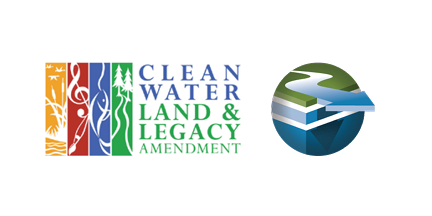RIM 1W1P is now out of funding for new applications. Next batching period will begin in June 2026
Overview

This program targets RIM projects in priority areas that contribute toward goals in Board approved and locally adopted Comprehensive Watershed Management Plans developed through the One Watershed, One Plan program. In the Twin Cities Metro Area, lands identified in a locally adopted watershed management plan, a county groundwater plan, or a soil and water conservation district comprehensive plan are also eligible.
This program is available across areas with approved plans and includes areas of the state that traditionally have not been eligible for RIM programs. Landowners – Check with your Soil and Water Conservation District to see if your land qualifies.
Benefits
- Available anywhere a comprehensive watershed management plan has been approved and adopted statewide
- Integrates habitat planning with comprehensive watershed management planning and provides an incentive for habitat-based projects
- Implements locally driven conservation priorities as identified in comprehensive watershed management plans
- Stacks water quality and habitat benefits
Eligibility
In addition to standard RIM Reserve Program general eligibility criteria, applications must meet all three of the following:
- The project will protect, restore, or enhance habitat for fish, game, and other wildlife.
- Offer is located in an area with an approved Comprehensive watershed management plan (CWMP)
- The project must do one or more of the following: 1) contribute to a measurable goal, 2) be located in a priority area, 3) and/or address an issue or implementation action in a CWMP
Scoring/Ranking
NEW RIM-1W1P Scoresheet linked in Application Materials section below
Payment Rates
Acres with crop history offered is > or equal 60% of the total acres = Standard RIM Rates - Conservation Easement Financial Worksheet (CEFW) (pdf)
Acres WITHOUT crop history offered > 40% of the total acres offered = Protection Easement - Conservation Easement Financial Worksheet (CEFW) Tax Assessed Calculation (xlsm)
Enrollment Focus and Sign-up Schedule
This program is open statewide to areas with approved plans. Enrollment begins 2/1/2023.
Funding decisions will be made quarterly. Batching period deadlines are March 31, June 30, September 30, December 31.
Easement Application Materials
- RIM Application Guidance (pdf)
- Easement Acquisition Checklist (pdf)
- Conservation Easement Application (pdf)
- RIM 1W1P Application Scoresheet Excel (xlsx)
- Area Assessment Form Word document (docx)
- Conservation Easement Financial Worksheet (CEFW) (xlsx)
- Standard (At least 60% of offered land has crop history)
- Tax-assessed (Less than 60% of offered land has crop history)
- Agreement Information Form Word document (docx)
- W-9 Form (IRS Website)
Geospatial Resources
- RIM Additional Wildlife Benefits (zip)
- Wildlife Action Network (WAN)
- Permanently protected areas of Minnesota (list not comprehensive):
Training
- RIM Application Training Webinar 11/17/2020
- RIM Application Training Webinar 3/29/2022
- RIM Title Insurance Training Webinar 11/18/2020
- RIM 1W1P Easement Program Training Webinar recording 1/25/2023
One Watershed, One Plan Participating Watersheds
The most up-to-date map can be found on this page.
